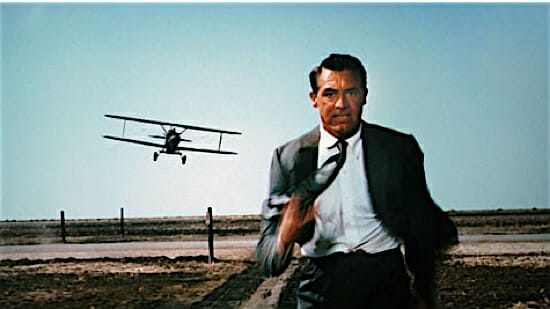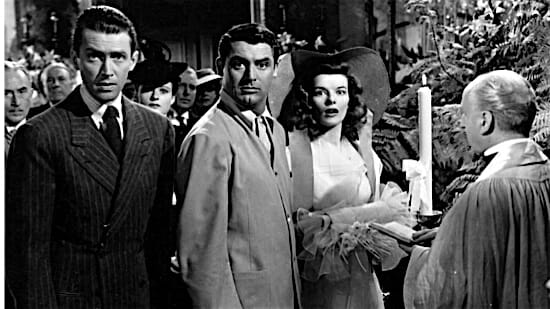The 20 Best Cary Grant Movies
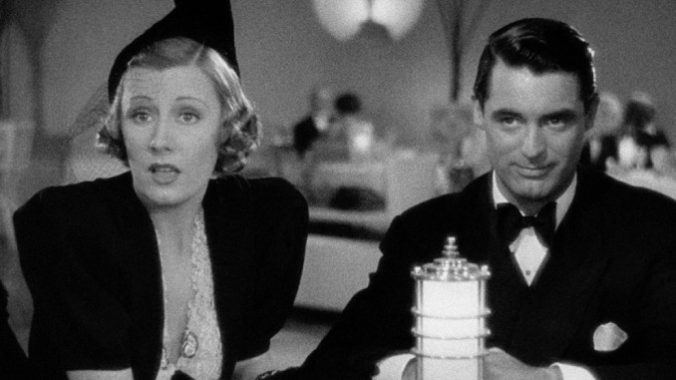
Looking at the best Cary Grant movies reminds you of the state of the modern movie star. In the last decade, there have been never-ending online conversations relitigating the waning star power of Hollywood leading men. Every debate over the best Chris serves to illuminate the absence of any real, reliable on-screen charisma. To pinpoint why this is demands focusing on stars who naturally commanded this kind of attention across different eras of filmmaking.
Cary Grant makes everything look easy, not in the shiny, digitized, inaccessible way of online influencers, but in the earned and real mode of performers who pay attention to their co-stars, nurturing their chemistry through attention and care. The mid-20th century was underscored by misogyny, but Grant solidified his stardom through his ability to study his leading ladies and respond to them earnestly. Any verbal sparring employed is in search of a shared language, rather than an attempt to dominate the scene.
85 years removed from the release of George Cukor’s Holiday, Grant’s ability to make everything look easy is especially missed. His work is more than a deceptive trick, it is a skill, honed from Grant’s early years perfecting his physical presence on the vaudeville circuit, polished into something reliable and winning.
Today we take a look at the 20 best Cary Grant movies:
20. Mr. Blandings Builds His Dream House (1948)
If Extreme Makeover: Home Edition were a feature length film with Hollywood stars, it would be Mr. Blandings Builds His Dream House. This is both a celebration of the film’s charming, low-stakes design, and a denouncement of its flimsy foundation. After an early scene establishing the cramped living conditions of the Blandings family in New York, Jim (Grant) wastes no time in moving his family to the countryside. If there is one thing to take away from this list, it is that there was no premise too brazen and barmy for Hollywood writers of the ’40s and ’50s to construct a plot around. While Myrna Loy and Cary Grant met this challenge head on in The Bachelor and the Bobby-Soxer, they struggle to emerge from the rubble of poor plotting in Mr. Blandings Builds His Dream House. Still, it is worth a watch for the jolts of physical comedy that alleviate the film’s plodding progression. –Anna McKibbin
19. That Touch of Mink (1962)
Perhaps somewhat reductive in its conceit, That Touch of Mink follows the naïve Cathy (Doris Day) who is confronted by a world of startling, contemporary values when she encounters the dashing bachelor Philip (Cary Grant) in her move to the big city. Much of the film plays on his suave confidence and her sexual inexperience. Yet, despite the pitfalls of this plot (especially from a contemporary outlook), the rapport between Day and Grant is lovely, a reliable foundation to construct the film on and to spin the sillier scenes around. Complete with a technicolor palette that costume designer Rosemary Odell and set designer George Milo take full advantage of, That Touch of Mink washes over the viewer with charm…and era-specific sexism. –Anna McKibbin
18. Blonde Venus (1932)
Marlene Dietrich was a destabilizing force in Hollywood, androgynous and angular, perpetually unfazed and floating above the men around her. Every costume, curated by Travis Banton, pulls attention to the wide open panes of Dietrich’s face. The story understands Dietrich’s skillset and doesn’t mire her in the machinations of traditional Hollywood heroines. Luckily Dietrich is paired with Grant, who uses his sense of curiosity to further elevate her performance. Their partnership serves both performers; she gladly towers over Grant and he subjects himself before her, gaze cast upwards, openly wanting. Blonde Venus is neither actors’ best vehicle, but it is undoubtedly rewarding to see their chemistry ignite onscreen, and it centers Helen’s (Dietrich) romantic and sexual rediscovery in the process. –Anna McKibbin
17. The Bishop’s Wife (1947)
A more treacly, less grounded version of It’s A Wonderful Life, The Bishop’s Wife follows Bishop Henry Brougham (David Niven), whose passion for rebuilding his new cathedral draws his attention away from his wife (Loretta Young) and child. Director Henry Koster spins a whole film around, what the kids would call, “a deeply unserious” problem: Your wife is hot and cool and your daughter is cute…go hang out with them! Luckily, Cary Grant is sent as an angel to reacquaint the Bishop with the joy of his everyday life and his otherworldly suaveness is brandished to save the story. What unfolds is a cheering Christmas watch with moments of unheralded depth from the actors (particularly Grant and Young). –Anna McKibbin
16. An Affair to Remember (1957)
A melodrama that would collapse under the weight of its own self-importance were it not for Deborah Kerr and Cary Grant’s winning earnestness, An Affair to Remember is a film established as a certified tear-jerker. My, and perhaps many modern audiences’, first introduction to the film is through Annie (Meg Ryan) and Becky’s (Rosie O’Donnell) tearful watch in Sleepless in Seattle. Through this, Leo McCarey’s soaring drama became canonical shorthand for unspoken female desire. The film’s conclusion, which basks in years of repressed desire, is one of the many moments that affirms this film’s place in the pantheon of tragic romance. –Anna McKibbin
15. To Catch a Thief (1955)
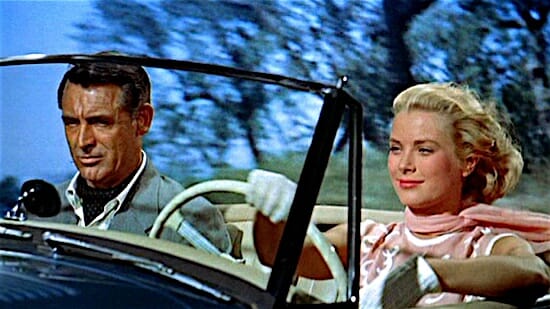
Cary Grant plays John Robie, a retired jewel thief who’s enjoying his golden years tending vines on the French Riviera. Just when the Grenache is hitting the perfect Brix level, a series of copycat heists put Robie back in the thiefly limelight. Seeking to clear things up, he compiles a list of locals who are known to have heistable jewels and, being a smart and wily guy, he starts tailing a very, very pretty one (Frances, played by Grace Kelly). Budding romance can be an accidental side-effect of these things, but when Francie’s ice does go missing, she suspects John and it sours their relationship, as one might expect. John goes on the proverbial lam to get to the bottom of it. Talk about jewels! Nothing ever sparkled quite like Grant and Kelly on-screen together, especially with the legendary Edith Head on costume design–their peerless charisma is in amazing hands here. The film itself is a bauble, unapologetically so: Light and frothy and absolutely not Rear Window (none of which is an indictment). Sometimes it’s enough for something to simply be charming and beautiful. This film proves it. —Amy Glynn
14. Only Angels Have Wings (1939)
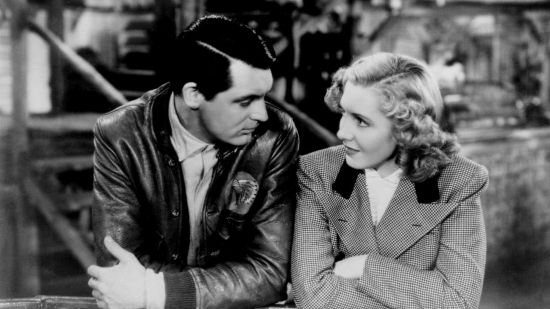
Grant’s greatest skill is his intensity, channeling a kind of certainty that settles a room into total stillness. Only Angels Have Wings keeps a lot of its action off-screen. Crash landings are relayed through quick cuts or one-sided conversations from a the shoddily built communication tower, and yet through Grant’s sense of full-bodied commitment, the stakes of such airborne drama feel as high as Top Gun: Maverick. Grant lurches forward, gripping the earpiece and speaking at a rapid pace, with his shoulders stacked high, burdened under the stress of the moment. With just his physicality, he conveys the insurmountable challenge of the moment. But Only Angels Have Wings’ lasting impact is due to the easy chemistry he shares with Jean Arthur. The final moment of the film is set aside for them; a playful breeze, clear after the oppressive rain that covered the night before. –Anna McKibbin
13. Arsenic and Old Lace (1944)
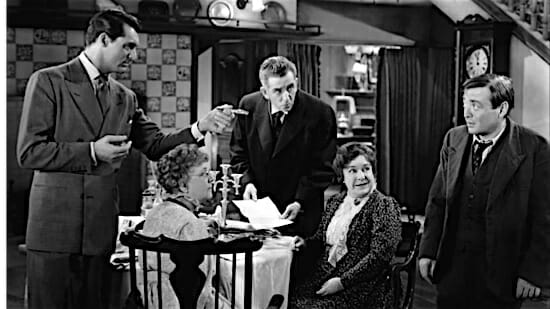
A single set, real-time piece that juggles a truly baffling number of plotlines, Arsenic and Old Lace is a rightly beloved farce. It is up to Cary Grant as Mortimer Brewster to keep the plot moving at its unfaltering pace; like the host of a raucous dinner party he answers two hours of questions directed at him with a stuttering passion, eating the sequence of courses before the crockery gets broken in an unceremonious fashion. Director Frank Capra’s skill in this film is in how he captures the Brewster family house, a single room with shadowy door frames and rickety stairs that embodies the thrill, romance and comedy of the story. –Anna McKibbin
12. She Done Him Wrong (1933)
If this were a ranking of Cary Grant’s best performances, She Done Him Wrong would not make the list. As Captain Cummings, Grant is passably virtuous, imposing himself on saloon singer Lady Lou’s (Mae West) life. Over the course of the film, Lou’s missteps are stacked on top of one another, towering and threatening to topple over and crush her. It is Cummings who steps in and saves her, but the journey has been such a sparkling dive into the time period, a cacophony of discordant noise from barely suppressed parties, that viewers will almost wish he hadn’t. She Done Him Wrong is worth watching for West’s performance, like a beam of light that wanders across the space capturing other characters in the glaring brightness. –Anna McKibbin
11. Bringing Up Baby (1938)

One of the most famous romantic comedies of all time, Bringing Up Baby profoundly understands the comic bluster and bravado of its two lead actors. For Katharine Hepburn, Susan Vance is like an early version of what would be her archetypal character: Boisterous but overwhelmingly naïve and clumsy, thoughtlessly drawing David Huxley (Cary Grant) into some wild (literally) conundrums. I prefer the vehicles that encourage Hepburn and Grant to discover one another on a more equal footing, but this imbalance doesn’t dilute the loveliness of their inbuilt rapport. Their dynamic is engrossing–quips immediately fly freely, shattering the delicate balance of the world David had built for himself. Bringing Up Baby would go on to define rom-coms for decades to come, stunningly simple and complicated, shallow and dense, Howard Hawks crafting something that feels miraculous. –Anna McKibbin
-

-

-

-

-

-

-

-

-

-

-

-

-

-

-

-

-

-

-

-

-

-

-

-

-

-

-

-

-

-

-

-

-

-

-

-

-

-

-

-


